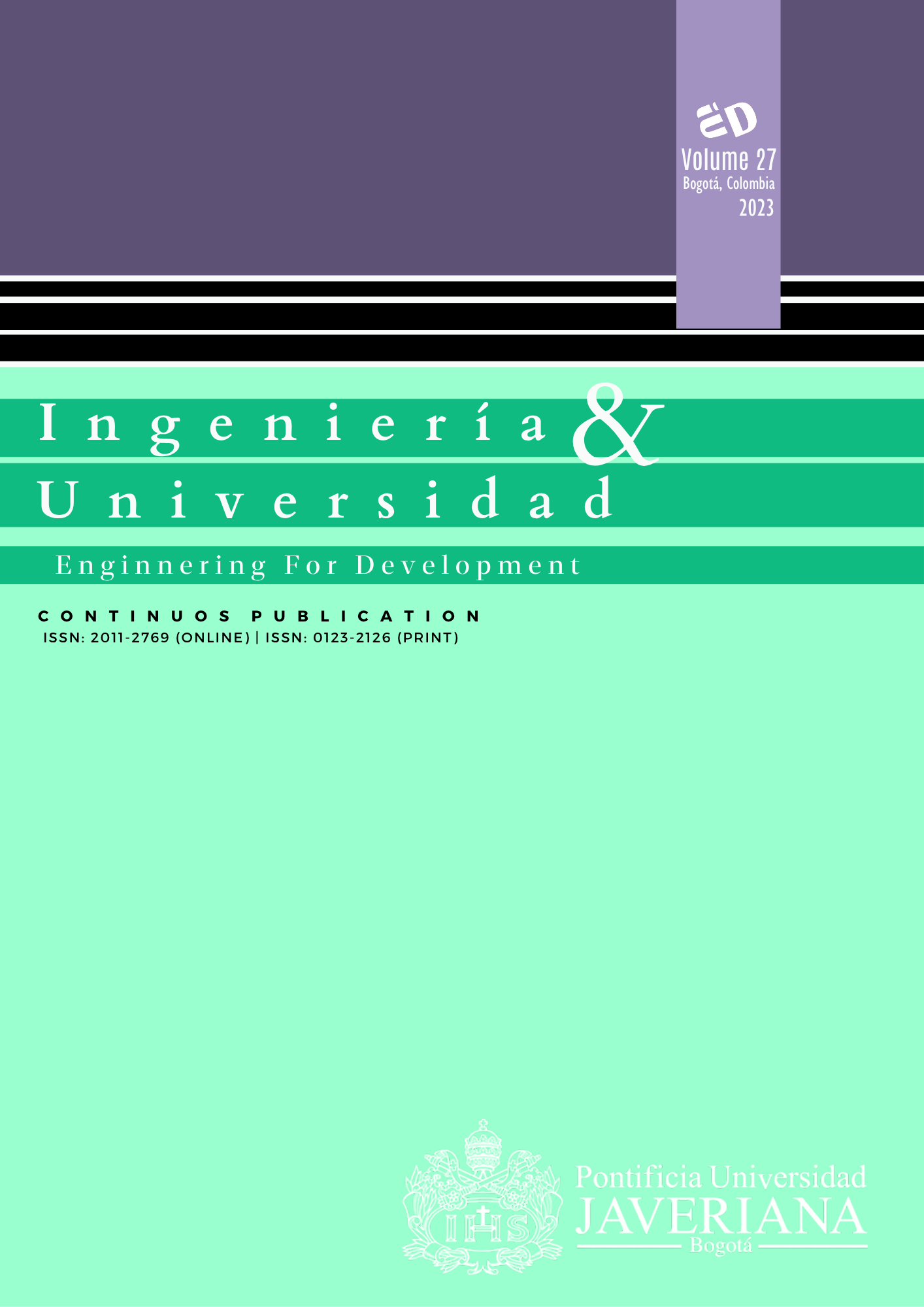Abstract
Objective. This work shows how the Define-Measure-Analysis-Improve-Control (DMAIC) cycle reduces the school dropout risk in a Mexican private University.
Materials and method. The materials used to develop this research were data collected from an academic enterprise resource planning software called UNISOFT, property of the Mexican Private University as well as the statistical software Minitab to perform all the numerical analysis. The methodology used to reduce the school dropout risk in the freshman year of studies of engineering was Six Sigma.
Results and discussion. Three six-sigma metrics were developed and measured to understand the process and reduce risk management. Each phase contributes to identify the root cause and to formulate possible solutions.
Conclusions. The DMAIC methodology was implemented in a period of four semesters; it involved both management and academic personnel. The results show an improvement in the dropout indexes and a new approach is being considered by the Faculty to sustain the effort.
[1] Consejo de Acreditación de la Enseñanza de la Ingeniería. A.C. (2018, May 21). CACEI. Available: http://cacei.org.mx/docs/marco_ing_2014.pdf
[2] A. Zeidmane and T. Rubina, “Student - Related Factor for Dropping Out in the First Year of Studies at LLU Engineering Programmes,”. Proceedings of the International Scientific Conference, pp. 612-618, 2017.
[3] W. de Vries, P. León, J.F. Romero, and I. Hernández, “¿Desertores o decepcionados? Distintas causas para abandonar los estudios universitarios,” Revista de la Educación Superior, pp. 29-50, 2011.
[4] S. Travers, “Supporting Online Student Retention in Community Colleges,” The Quarterly Review of Distance Education, pp. 49-61, 2016.
[5] C. Belser, D. Prescod, A. Daire, M. Dagley, and C. Young, "Predicting Undergraduate Student Retention in STEM Majors Based on Career Development Factors," The Career Development Quarterly, pp. 88-93, 2017.
[6] A. Cherif, G. Adams, F. Movahedzadeh, M. Martyn, and J. Dunning, "Why Do Students Fail? Faculty's Perspective," Learning Environments, pp. 1-17, 2014.
[7] H. Wang, J. Chu, P. Loyalka, T. Xin, Y. Shi, Q. Qu, and C. Yang, "Can Social-Emotional Learning Reduce School Dropout in Developing Countries?," Journal of Policy Analysis and Management, pp. 818-847, 2016
[8] V. Gupta, R. Jain, M. Meena, and G. Dangayach. (2017, September 20). Six-sigma application in tire-manufacturing company: a case study. Available: https://doi.org/10.1007/s40092-017-0234-6
[9] W. Timans, K. Ahaus, R. Solingen, M. Kumar, and J. Antony, “Implementation of continuous improvement based on Lean Six Sigma in small- and medium-sized enterprises,” Total Quality Management, pp. 309-324, 2016.
[10] E. Gheysari, H. Yousefi, H. Soleymani, and S. Mojdeh, “Effect of six sigma program on the number of surgeries cancellation,” Iranian of Nursing and Midwifery Research, pp. 191-196, 2016.
[11] Z. Tosuner, Z. Gücin, T. Kiran, S. Büyükpinarbasili, S. Turna, O. Taskiran, and D. Arici, “A Six Sigma Trial for Reduction of Error Rates in Pathology Laboratory,” Turkish Journal of Pathology, pp. 171-177, 2016.
[12] P. Madhani, “Six Sigma Deployment in HR: Enhancing Competitiveness,” SCMS Journal of Indian Management, pp. 79-97, 2017.
[13] International Organization for Standardization. (2017, December 14). ISO 31000 - Risk management. Available: https://www.iso.org/obp/ui#iso:std:iso:31000:ed-2:v1:en
[14] M. Wandee, C. Sirisuthi, and S. Leamvijarn, “The Study Elements and Indicators of Risk Management System for Secondary Schools in Thailand,” International Education Studies, pp. 154-164, 2017.
[15] A. Opre, R. Buzgar, D. Dumulescu, L. Visu-Petra, D. Opre, and B. Macavei, M. Buta, and S. Pintea, “Assessing Risk Factors and the Efficacy of a Preventive Program for School Dropout,” Cognition, Brain, Behavior. An Interdisciplinary Journal, pp. 185-194, 2016.
[16] N. Miller, “A Model for Improving Student Retention in Adult Accelerated Education Programs,” Education, pp. 104-114, 2017.
[17] M. Crede, S. Roch, and U. Kieszczynka, “Class Attendance in College: A Meta-Analytic Review of the Relationship of Class Attendance with Grades and Student Characteristics,” Review of Educational Research, pp. 272-295, 2010.
[18] M. Credé and N. Kuncel, “Study Habits, Skills, and Attitudes: The Third Pillar Supporting Collegiate Academic Performance,” Perspectives on Psychological Science, pp. 425-453, 2008.
[19] P. Peng, C. Wang, and J. Namkung, “Understanding the Cognition Related to Mathematics Difficulties: A Meta-Analysis on the Cognitive Deficit Profiles and the Bottleneck Theory,” Review of Educational Research, pp. 434-476, 2018.

This work is licensed under a Creative Commons Attribution 4.0 International License.
Copyright (c) 2024 Luis Cuautle Gutierrez



